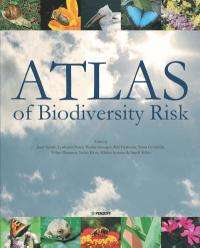Politics are a key factor in biodiversity

Political decisions are among the main driving forces that influence the survival of biodiversity. They have a direct impact on decisions in key areas of man's interaction with nature and the countryside, e.g. through agriculture, traffic or infrastructure policies. These decisions also influence many relevant socio-economic processes underlying human activities, writes an international team of scientists in the "Atlas of Biodiversity Risk", the first of its kind to be published.
The political framework and policy arrangements should focus increasingly on reducing the pressure on biodiversity while integrating recommendations made by scientists and academics. These recommendations should also help politicians to become more aware of the role of policy as a factor in biodiversity loss. To achieve this, more emphasis needs to be placed on the economic, cultural and intangible resources provided by biodiversity.
The Atlas combines the key results of the major European research project ALARM (68 partner organisations in 35 countries in Europe and other continents) with some core outputs of numerous other research networks. In total, 366 authors from more than 180 institutions in 43 countries contributed to the 280-page Atlas. The publication was presented on Thursday at the Green Week conference 2010 in Brussels, to which the European Commission invited around 4,000 participants.
The new "Atlas of Biodiversity Risk" is the first of its kind to summarise the major factors leading to the loss of biodiversity on a European and global level. The main risks are caused by global climate and land use change and environmental pollution. The loss of pollinators and the impact of biological invasions are particularly relevant factors which are given special attention. The impact and consequences of biodiversity loss are described with a strong focus on socio-economic factors and their effects on society. "In all these efforts, it must remain clear that no single policy measure will rescue biodiversity - there is no silver bullet. Instead, a systematic review of all policy fields is necessary to incorporate biodiversity," says Dr. Josef Settele of the Helmholtz Centre for Environmental Research (UFZ), who heads the atlas publication team. "Research results should therefore be used to continuously update programs and develop policies for the long term."
The "Atlas of Biodiversity Risk" makes use of three different scenarios for the forecast of effects and the elaboration of potential mitigation options: a) the growth applied strategy (GRAS), b) a Business-As-Might-Be-Usual scenario (BAMBU) and c) a Sustainable European Development Goal (SEDG). "It is important to understand that scenarios are not predictions," says Dr. Joachim H. Spangenberg of SERI (Sustainable Europe Research Institute) Germany, who headed the socio-economic part of the ALARM project. "Scenarios provide a set of reasonable assumptions to help one's thinking about possible futures and the impact of current decisions on future development. They illustrate what could be the consequences of human decisions." The principles underlying these scenarios are explained and the effects have been modelled and are illustrated and tested in a series of consistent narratives. The Atlas is divided into eleven chapters which deal with the pressures on biodiversity, backed up by more than 100 case studies.
The Atlas is written for a wide range of readers. Academics will find summaries of methods, approaches and case studies. Conservationists and policy-makers will use the easy-to-understand recommendations based on academic findings. Lecturers and teachers will find examples to illustrate the major challenges in our century of global environmental changes. "Ultimately everyone concerned about the environment will find the Atlas a strong weapon in their struggle to save biodiversity on our planet," says Lyubomir Penev, one of the co- editors. "We very much hope that the present Atlas will find its way into many organisations, into the public at large, and into decision making processes of the policy sphere," adds Josef Settele, who, together with his eight co-editors from Germany, Slovenia and Bulgaria, firmly believes that biodiversity conservation will not be achieved in an unsustainable society, just as sustainability in society cannot be achieved without safeguarding biodiversity for future generations.
More information:
Publication:
Josef Settele, Lyubomir Penev, Teodor Georgiev, Ralf Grabaum, Vesna Grobelnik, Volker Hammen, Stefan Klotz, Mladen Kotarac & Ingolf Kuhn (Eds) (2010):
Atlas of Biodiversity Risk.
Pensoft. Sofia. ISBN 978-954-642-446-4.
Provided by Helmholtz Association of German Research Centres

















